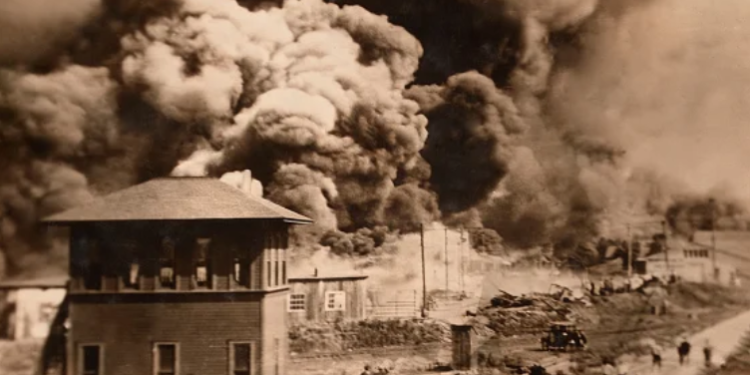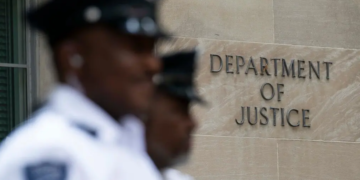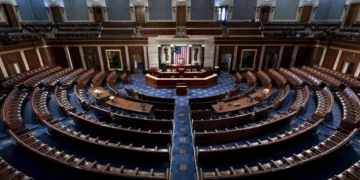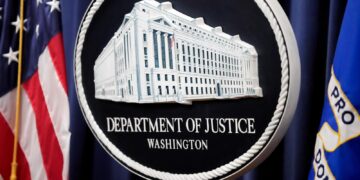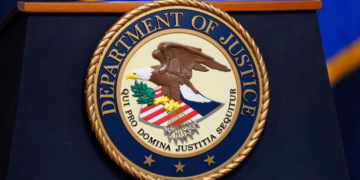Jan 11, 2025 Story by: Publisher
The Justice Department has published an extensive report detailing its findings from the review and evaluation of the Tulsa Race Massacre, conducted under the Emmett Till Unsolved Civil Rights Crimes Act. The Civil Rights Division announced this review at a Cold Case Convening on September 30, 2024.
“The Tulsa Race Massacre stands out as a civil rights crime unique in its magnitude, barbarity, racist hostility and its utter annihilation of a thriving Black community,” stated Assistant Attorney General Kristen Clarke of the Civil Rights Division. She continued, “In 1921, white Tulsans murdered hundreds of residents of Greenwood, burned their homes and churches, looted their belongings, and locked the survivors in internment camps. Until this day, the Justice Department has not spoken publicly about this race massacre or officially accounted for the horrific events that transpired in Tulsa. This report breaks that silence by rigorous examination and a full accounting of one of the darkest episodes of our nation’s past. This report lays bare new information and shows that the massacre was the result not of uncontrolled mob violence, but of a coordinated, military-style attack on Greenwood. Now, more than 100 years later, there is no living perpetrator for the Justice Department to prosecute. But the historical reckoning for the massacre continues. This report reflects our commitment to the pursuit of justice and truth, even in the face of insurmountable obstacles. We issue this report with recognition of the courageous survivors who continue to share their testimonies, acknowledgment of those who tragically lost their lives, and appreciation for other impacted individuals and advocates who collectively push for us to never forget this tragic chapter of America’s history.”
The report meticulously examines events from May 31 to June 1, 1921, when white Tulsans launched a deliberate assault on Greenwood, a prosperous Black community often referred to as Black Wall Street. During the massacre, hundreds of Black residents were killed, homes and businesses were reduced to ashes, and personal property was stolen. Survivors were left with no resources or support. Post-massacre, Tulsa’s city government failed to provide aid and even blocked rebuilding efforts, while legal avenues to seek justice proved futile.
Although no avenue for prosecution remains—due to the advanced age of any potential defendants and the expiration of statutes of limitations—the report serves as the federal government’s first thorough reckoning with this devastating event. Echoing the words of anti-lynching advocate Ida B. Wells, “The way to right wrongs is to turn the light of truth upon them,” the report strives to illuminate the truth about the massacre.
Conducting the Review
The review was led by career lawyers and investigators from the Emmett Till Cold Case Unit of the Civil Rights Division’s Criminal Section. The team consulted survivors, descendants, and scholars, examined firsthand accounts from now-deceased witnesses, and reviewed legal documents, books, and scholarly articles. Their efforts culminated in a comprehensive, 123-page report supported by extensive documentation.
Key Findings
On May 31, 1921, a mob of up to 10,000 white Tulsans launched an attack on Greenwood, which was systematically organized and far exceeded the scope of mob violence. The violence was triggered by unfounded accusations against a 19-year-old Black man, Dick Rowland, who was alleged to have assaulted a white woman operating an elevator. Following his arrest, sensationalized media coverage fueled a mob intent on lynching Rowland.
In an effort to prevent the lynching, Black men from Greenwood, some of whom were World War I veterans, were called to the courthouse. Their presence was viewed as a challenge to the racial hierarchy, leading to a confrontation. When gunfire erupted, chaos ensued. The local police deputized hundreds of white residents, many of whom had been drinking and were eager for violence.
The following morning, coordinated destruction began as a whistle signaled the start of systematic arson and violence. Greenwood was reduced to ashes as 35 city blocks were looted and destroyed. Many Black families fled, abandoning their homes and belongings. Survivors faced internment in makeshift camps under armed guard, while law enforcement disarmed Black residents and, in some cases, participated in the violence.
City officials failed to fulfill promises to assist in Greenwood’s recovery. Instead, they imposed fire codes that made rebuilding nearly impossible and rejected external aid.
Legal Implications
The Justice Department’s report acknowledges that modern civil rights laws would have enabled federal prosecutors to pursue hate crime charges against the perpetrators. However, such laws were not in effect in 1921. Moreover, the statute of limitations has long expired, and no living witnesses remain who could provide testimony under the Constitution’s Confrontation Clause.
While the lack of prosecution may be disappointing, the report underscores the importance of acknowledging and preserving the history of the massacre for future generations.
Moving Forward
Assistant Attorney General Clarke will convene with survivors, descendants, and stakeholders from the Greenwood community to discuss the findings and continue the dialogue about justice and reconciliation. Source: Department of Justice


